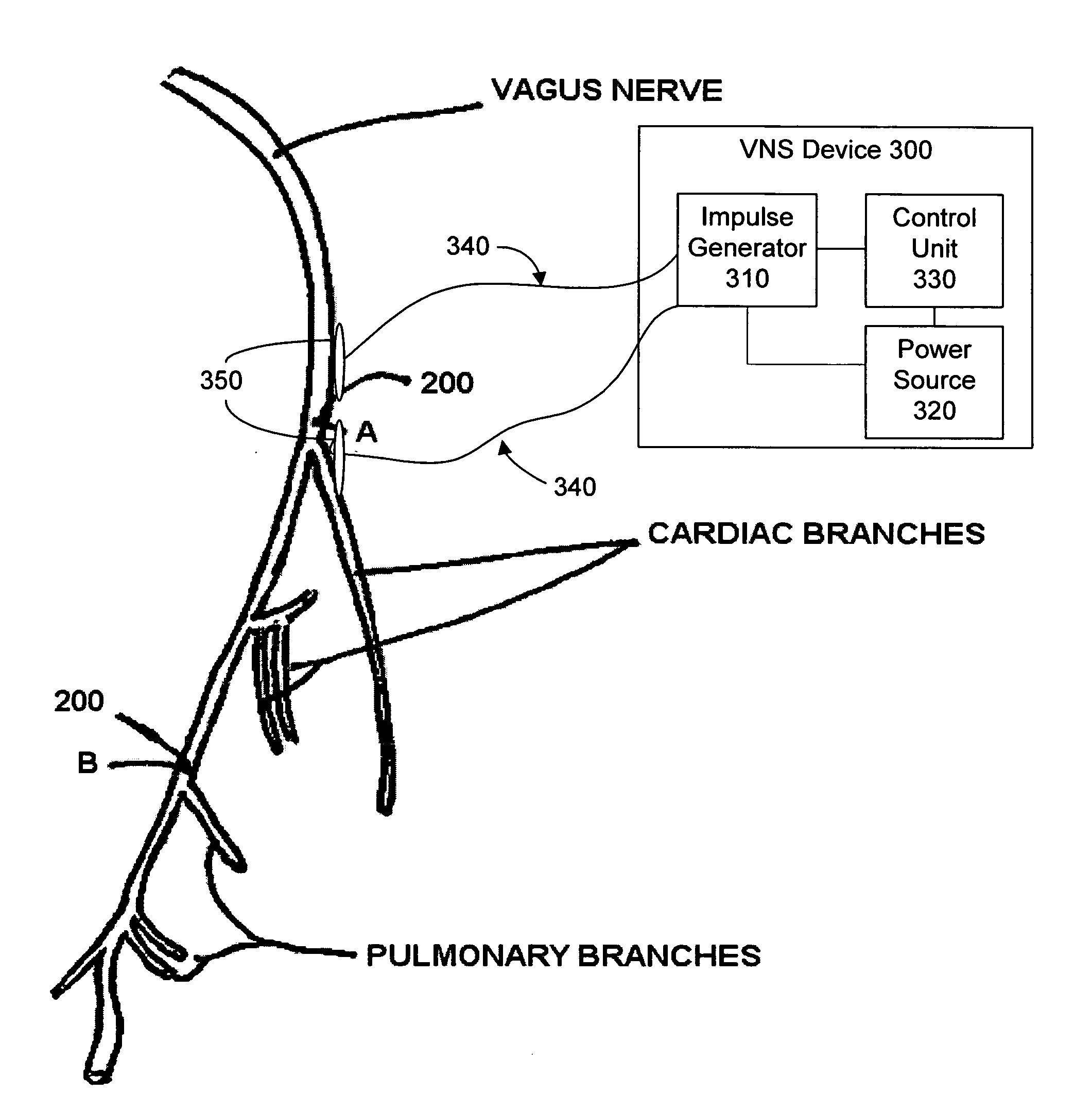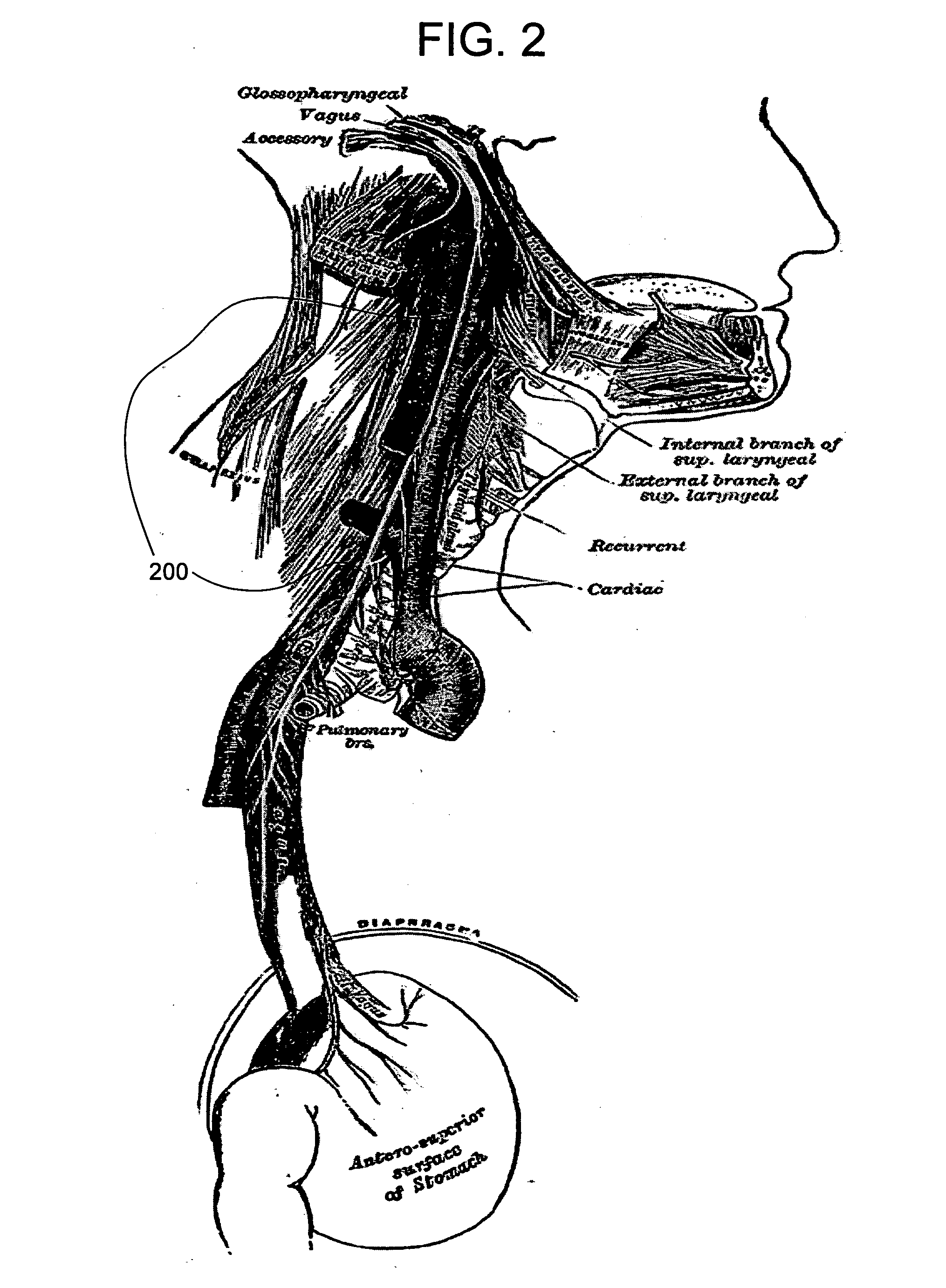Methods and apparatus for treating anaphylaxis using electrical modulation
- Summary
- Abstract
- Description
- Claims
- Application Information
AI Technical Summary
Benefits of technology
Problems solved by technology
Method used
Image
Examples
Embodiment Construction
[0049]It shall be understood that the embodiments disclosed herein are representative of preferred aspects of the invention and are so provided as examples of the invention. The scope of the invention, however, shall not be limited to the disclosures provided herein, nor by the provisional claims appended hereto.
[0050]While the exact physiological causes of anaphylaxis (e.g., inducing bronchial constriction and / or hypotension) have not been determined, the present invention postulates that the direct mediation of the smooth muscle constriction is the result of over-activity in the vagus nerve, which is a response to the flood of pro-inflammatory mediators' interacting with the receptors on the nerve fibers themselves.
[0051]It has been observed in the literature that the nervous system maintains a balance of the signals carried by the sympathetic and parasympathetic nerves. The vagus nerve, as the source of the signal to constrict bronchial smooth muscle and / or the cardiac muscle, is...
PUM
 Login to View More
Login to View More Abstract
Description
Claims
Application Information
 Login to View More
Login to View More - R&D
- Intellectual Property
- Life Sciences
- Materials
- Tech Scout
- Unparalleled Data Quality
- Higher Quality Content
- 60% Fewer Hallucinations
Browse by: Latest US Patents, China's latest patents, Technical Efficacy Thesaurus, Application Domain, Technology Topic, Popular Technical Reports.
© 2025 PatSnap. All rights reserved.Legal|Privacy policy|Modern Slavery Act Transparency Statement|Sitemap|About US| Contact US: help@patsnap.com



